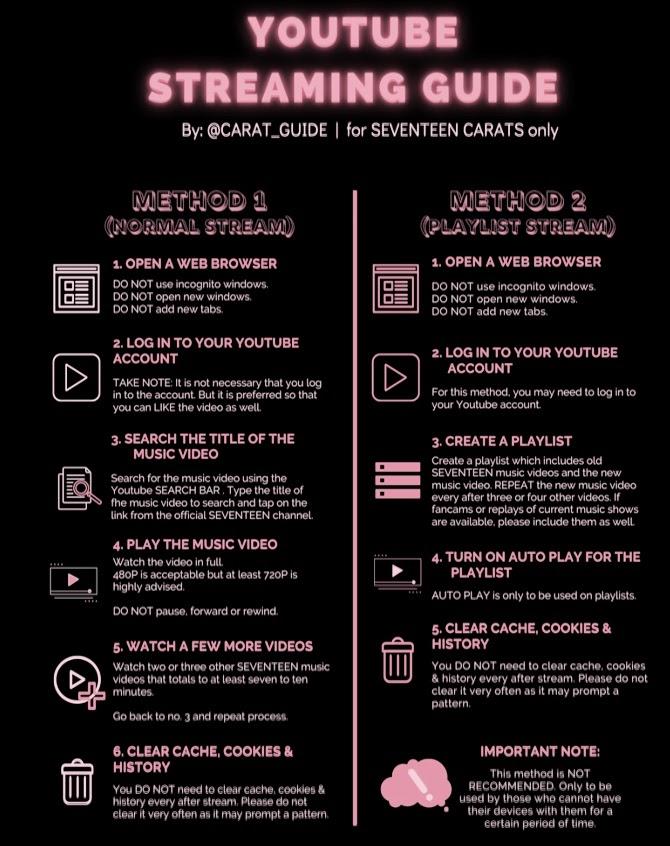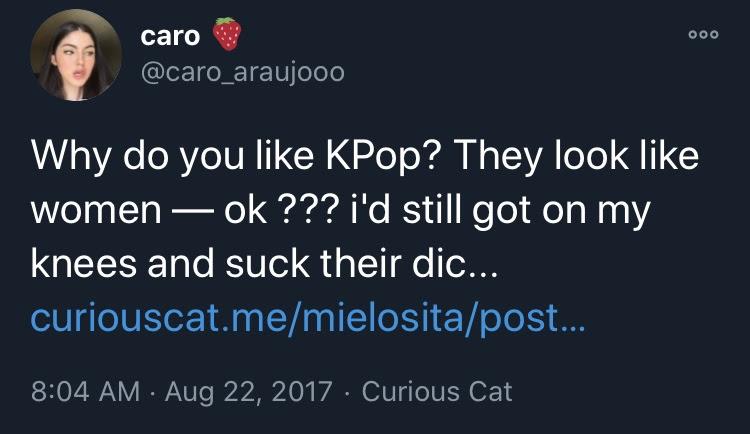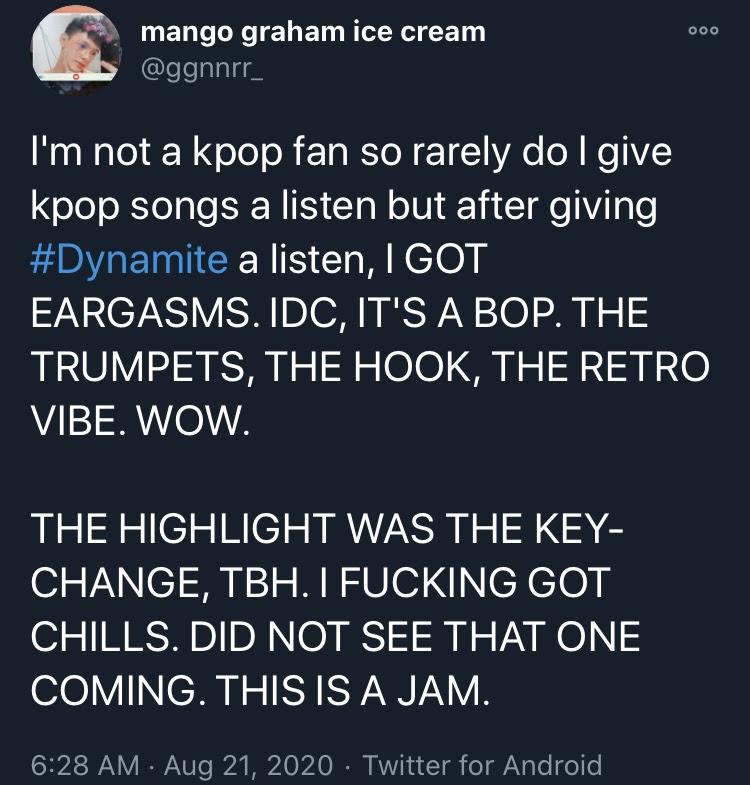
How the Kpop Community Uses YouTube’s Algorithm to Their Benefit
The mainstream media was surprised, but the kpop community not as much. BTS (a popular South Korean boy band) broke the record for most views in 24 hours on a video on YouTube for their song Dynamite. It gained 101,1 million views in 24 hours. Kpop refers to the genre of Korean popular music of which BTS is a well-known example. For the kpop community, this was not surprising, since the goal set to be achieved by BTS’ fandom, called Army, was 100 million (What Are the Overall Comeback Goals for Dynamite?, n.d.). So, how do kpop music videos get so many views in such a small amount of time compared to Western artists? And furthermore, why does this phenomenon only happen in the genre of kpop?
In this article, we will look at the case of streaming music videos for the first 24 hours. Streaming in this context means watching a certain music video with the goal of it getting a lot of views and eventually for the music video to start trending. The way the kpop community streams music videos and the algorithm YouTube employs will be discussed. An algorithm organizes and categorizes the things you see on a platform by collecting data (Tufecki, 2015). A short comparison to popular, Western music videos will also be incorporated as well as a few explanations on why the kpop community streams music videos. Regarding this topic, YouTube will be discussed as a mediator, actively shaping the performance of, in this case, watching videos on YouTube instead of merely facilitating the user (van Dijck, 2013).
Kpop versus Western music video releases
BTS beat the 24-hour record set by another kpop group, Blackpink, who had gained 86,3 million views in a single day. This seems to be an ongoing phenomenon; kpop groups breaking the record for most viewed video in a single day after each other. Out of the top twelve most viewed videos on YouTube in 24 hours, ten are from two kpop groups, namely BTS and Blackpink (Wikipedia contributors, 2020).
One obvious explanation for this phenomenon is the concept of teasing that is done more often in the kpop industry than in the Western music industry. It is normal for kpop groups or Korean solo artists to release numerous teasers regarding album tracks, pictures that could spoil the genre of the title track or music video teasers, or small clips comparable to a movie trailer of about 30 seconds where a small part of the music video is shown with the accompanied music. There is a sort of countdown which creates suspense, so people will look forward to the release. These teasers are spread on all big platforms; YouTube, Instagram, Twitter and other big (Korean) platforms.
There is a sort of countdown which creates suspense, so people will look forward to the release.
In Western music, this is not the case. Often there will be one post where the artist announces to have a release coming up and one showing the release date and time. It may show up again when media outlets post about it, but there are barely any examples of complex teasers as done in the kpop industry. There is no built-up suspense surrounding a music video release, which may cause casual fans to forget about the release.
Streaming guides: Playing into the algorithm
When a music video release nears, 'streaming guides' are being distributed online. This means that there are accounts, mostly on Twitter and Instagram, that post about how to stream properly on different platforms. The streaming goals are set for platforms such as YouTube and Spotify, but also Billboard and Shazam can be included. For the release of Dynamite, there was a goal for 100 million views on YouTube, but the website also mentions other goals (What Are the Overall Comeback Goals for Dynamite?, n.d.). This includes 100.000 US sales, 500.000 Shazams in the first week, and 7 million streams on Spotify on the first day. The website also mentions that one should not panic or feel overwhelmed in reaching these goals and thus should focus on only one or two platforms. This showcases to what extent fans are willing to stream and support their favorite artists.
BTS is not the only group where whole websites are dedicated to streaming guidelines and goals regarding new releases. There are websites and guides created for almost every kpop artist, as it is a normal phenomenon to make streaming guides for artists and try to support them in the best ways. After looking at different streaming guides for different groups, multiple similarities can be found between the streaming guidelines. In this case, streaming guides for the kpop boy groups Ateez (Ateez Comeback Guide YouTube, n.d.), NCT (Nctinfo, n.d.), Seventeen (@carat_guide, n.d.) and Stray Kids (Stray Kids Streaming Guide, n.d.) are being compared. Comparing these can provide the best insights into streaming guides since they are the most extensive streaming guides which can be found for the respective groups.

Streaming Guide for the Kpop Boy Group Seventeen
The similarities in streaming guides include watching the whole video, including advertisements, on a high resolution with the sound on. Next to that, it's important to like and comment, but do not spam or mention the words “stream” or “views” and do not use emojis to prevent the views from freezing. Then watch two to three other videos and come back to the video you are supposed to stream. It says one does not have to delete their internet history. Also, share the video with others. Guides stress that irregularities are important, since if the pattern is the same, YouTube may view you as a bot and delete views. This, amongst other things, should play into YouTube’s algorithm and cause for every view to be counted and thus the high number of views in 24 hours. There is a belief in the kpop streaming community that YouTube has a tendency to either not count views, freeze views or even delete views when the streaming has not been done properly according to YouTube.
YouTube’s algorithm: compliance to the streaming guides?
According to YouTube (How Engagement Metrics Are Counted - YouTube Help, n.d.) they “ want to make sure that your metrics are high quality and come from actual humans and not computer programs.” They also state that “YouTube may temporarily slow down, freeze, or change your metric count, and discard low-quality playbacks”. This means that the belief that YouTube may delete views when they think the view is not due to a human clicking on the video with an intention to watch is true.
What is remarkable is YouTube’s lack of specifying on what counts as a view. It is believed that this is intentional, since people may only do what they need to do to meet the requirements, instead of watching whole videos and will thus spend less time on the platform (Parsons, 2017). However, there is some information made available through leaks and marketeers about what is counted as a view to YouTube.
Through several tests, it has been discovered that a view counts after watching 30 seconds of the video. It is believed that after watching 30 seconds the person viewing it has a clear image of what said video is about. To prevent repeat view spam, it is believed that YouTube stops counting views after repeating the video four or five times a day (Sampy, 2020).
How to properly stream a music video
It thus seems that many streaming guides are right on the most important parts, but some parts are completely wrong. Views do not seem to freeze because of comments or emojis, but rather to check if all of the views have been valid or not. Specific words like “view” or “stream” do also not seem to influence the freezing or the view count of a video.
The community is accurate in stressing how one should watch the full video to be sure a view is counted and to not rewatch a video too often. The technique of watching two or three other videos before going back to streaming seems to be an effective one. Irregularities do seem to be important, in order to stress that an account is not a bot.
This shows how the kpop community has great knowledge about YouTube’s algorithm and how to act upon that algorithm.
Even if it does not look important, shares are “strongly tied to first page YouTube rankings” (Dean, 2017). The same thing applies to likes and comments. The number of comments a video has strongly correlates with higher rankings. Comments thus do seem to positively influence the number of views, but also are of a positive influence. One should leave many comments to make sure the video gets recommended to other users. The belief one should not spam could thus be true, but only to a certain extent.
What is surprising is the “not having to delete one’s watching history”, since marketeers believe that after watching a video four or five times a day, the view is not counted anymore. Considering how kpop stans do not seem to delete their viewing history, this view might be false. For BTS to reach 101 million views in a single day means that roughly 20 million people should be streaming. Considering BTS has 31 million listeners a month on Spotify, and many of those are probably casual listeners, it is unlikely that one can only view a video a maximum of five times a day to consider the views legitimate (BTS, n.d.).
This shows how the kpop community has great knowledge about YouTube’s algorithm and how to act upon that algorithm. The streaming guides are mostly correct, so this may be a good explanation of how kpop music videos are watched so often in the first 24 hours of release.
Creating the Korean Wave

An Example of an Attempt to Ridicule Kpop Artists
An often discussed topic in the kpop community is acceptance. Acceptance of a new language, a new culture, into the mainstream media and whether the spread of this culture is really welcomed. Many people in the kpop community have the feeling they are being ridiculed for liking an unusual style of music. Often this ridiculing is done by racist remarks or putting the artists in a negative spotlight. Normalizing the genre may be a big reason why songs are streamed so much, up to the point that streaming guides are made. The want of something one adores to be socially accepted.
By watching music videos often, specifically in the first 24 hours after release, the video is more likely to end up on trending pages, especially the trending page for music. Kpop stans are thus using YouTube's function of a mediator (van Dijck, 2013) to their own benefit, hoping the platform will recommend the music videos to other users who have not been in touch with kpop or have negative prejudices about the genre. New users clicking this video will result in more of their recommendations linking to kpop, making that one click a possibility of having new people listen to the music genre on an everyday basis. Having more people listen to kpop makes it more socially acceptable which achieves the goal kpop stans aim for.

People Being Introduced to the Genre of Kpop
BTS releasing Dynamite at first barely came with any coverage by the media, but after getting over 100 million streams in a day the song got way more attention. Radio stations picked up on it and started playing it regularly, causing it to peak at number one on the Billboard charts (Trust, 2020). People started listening to it on the daily, even if they had never been introduced to kpop before.
Creating opportunities by just one view
Apart from creating international popularity for the genre, people also want to see their favorite artist succeed in Korea. Some groups have gained immense popularity overseas while still not being recognized as a big artist in their home country. This may also be done by the streaming of YouTube videos in the first days of release.
In Korea, it is normal after an artist releases an album to promote this album. This is done by performing at music shows. These can occur up to six times a week, Monday being the day of release and the other days being the days the music shows get aired. At the end of each episode, a winner is chosen based on album sales, live votes, streams, and music video views. The music shows are mainly watched by a Korean audience, but international fans can have a big influence by buying albums, voting, and streaming the music video. When a group gets a lot of wins, they get more attention and recognition from Korean fans and their popularity in Korea is more likely to grow.
Gaining a domestic fanbase is important because it opens up new opportunities, such as appearing on Korean tv shows or even getting a reality show. These things are barely possible with just an international fanbase. This means that a simple act of streaming a music video can result in opening up more doors for the artist. The past shows that groups that have a solid Korean fanbase are more likely to exist for a longer amount of time. Companies tend to disband groups because of a lack of popularity in their home country.
The use of YouTube by the kpop community
The kpop community seems to be surprisingly up to date with YouTube’s algorithm and their way of counting views. Some components were not completely based on the truth, but the majority of the claims in the streaming guides seem to be true. This is remarkable because there have not been official guidelines regarding what specifically counts as a view.
There are multiple possibilities as to why the kpop community is so fixated on streaming a music video, especially in the first 24 hours. It could be because of the suspense created by teasers, drawing more viewers in the first 24 hours after release. Another explanation could be to make listening to kpop more socially acceptable, influencing the trending page and thus making use of YouTube as a mediator (van Dijck, 2013). Yet another possibility is to create a bigger chance for the artist to win a music show, creating an opportunity to grow the artist’s domestic fanbase which in turns increases their chance at a long career.
Of course, there could be multiple explanations, even ones not discussed in this article. For example, another explanation could be the possible rivalry between fandoms of different artists and even within fandoms of the same artist, wanting to break each other’s and their own previous records, which possibly drives them to stream more. There could still be more research done regarding this topic, extending our knowledge regarding this phenomenon.
References
Ateez Comeback Guide YouTube. (n.d.). Foratinyguide.Carrd.Co. Retrieved 8 January 2021.
BTS. (n.d.). Spotify. Retrieved January 10, 2021.
@carat_guide. (n.d.). YouTube Streaming Guide. Seventeencaratguide.Com. Retrieved 8 January 2021.
Dijck, V. J. (2013). The Culture of Connectivity: A Critical History of Social Media (1st ed.). Oxford University Press.
eDean, B. (2017, February 28). We Analyzed 1.3 Million YouTube Videos. Here’s What We Learned About YouTube SEO. BackLinko.
How engagement metrics are counted - YouTube Help. (n.d.). Google. Retrieved January 10, 2021.
nctinfo. (n.d.). Tumblr. Retrieved 8 January 2021.
Parsons, J. (2017, August 25). How Long Until Watching a YouTube Video Counts as a View? Growtraffic Blog.
Sampy, B. (2020, November 11). YouTube Views: How Do They Get Counted? | Hurrdat. Hurrdat Marketing.
Stray Kids Streaming Guide. (n.d.). Staystreamguide.Carrd.Co. Retrieved 8 January 2021.
Trust, G. (2020, September 9). BTS’ “Dynamite” No. 1 on Billboard Hot 100 for Second Week. Billboard.
Tufekci, Z. (2015). Algorithmic Harms Beyond Facebook and Google: Emergent Challenges of Computational Agency. Colorado Technology Law Journal, 3, 203–218.
What are the overall comeback goals for Dynamite? (n.d.). BTS (방탄소년단) Single Comeback Goals. Retrieved 8 January 2021.
Wikipedia contributors. (2020, December 12). List of most-viewed online videos in the first 24 hours. Wikipedia.